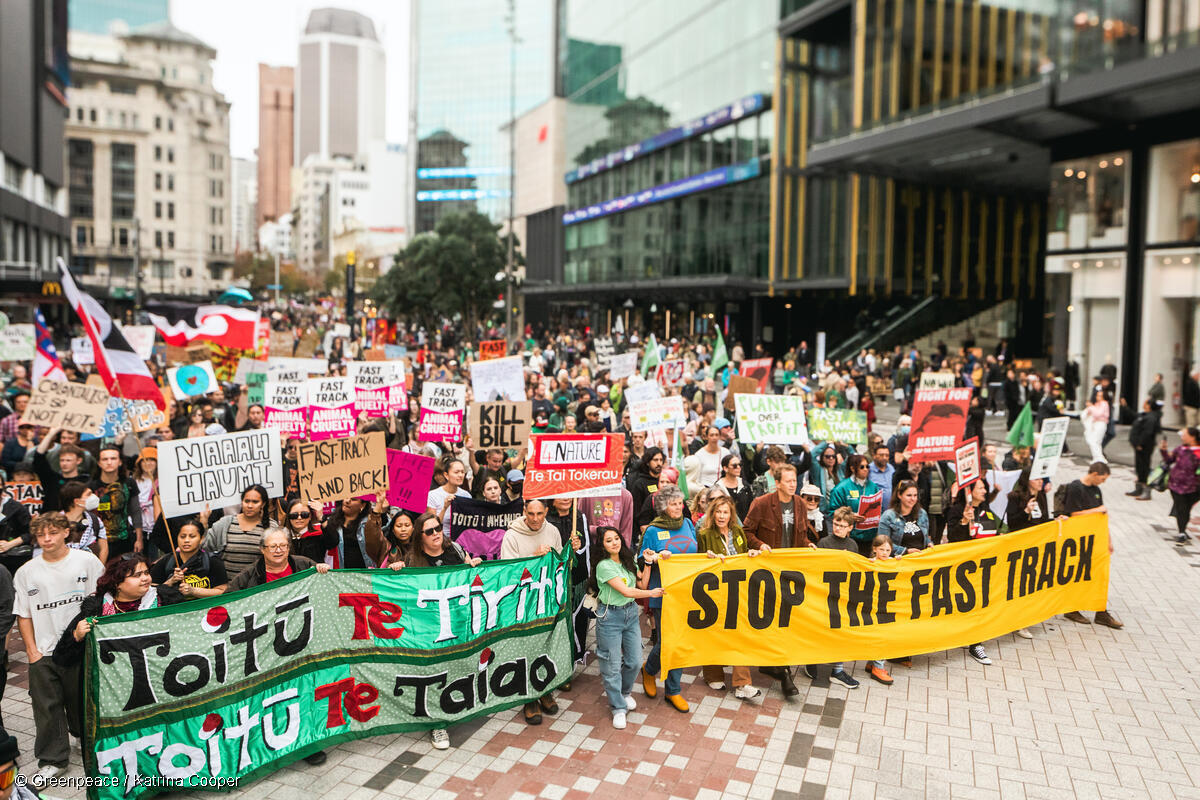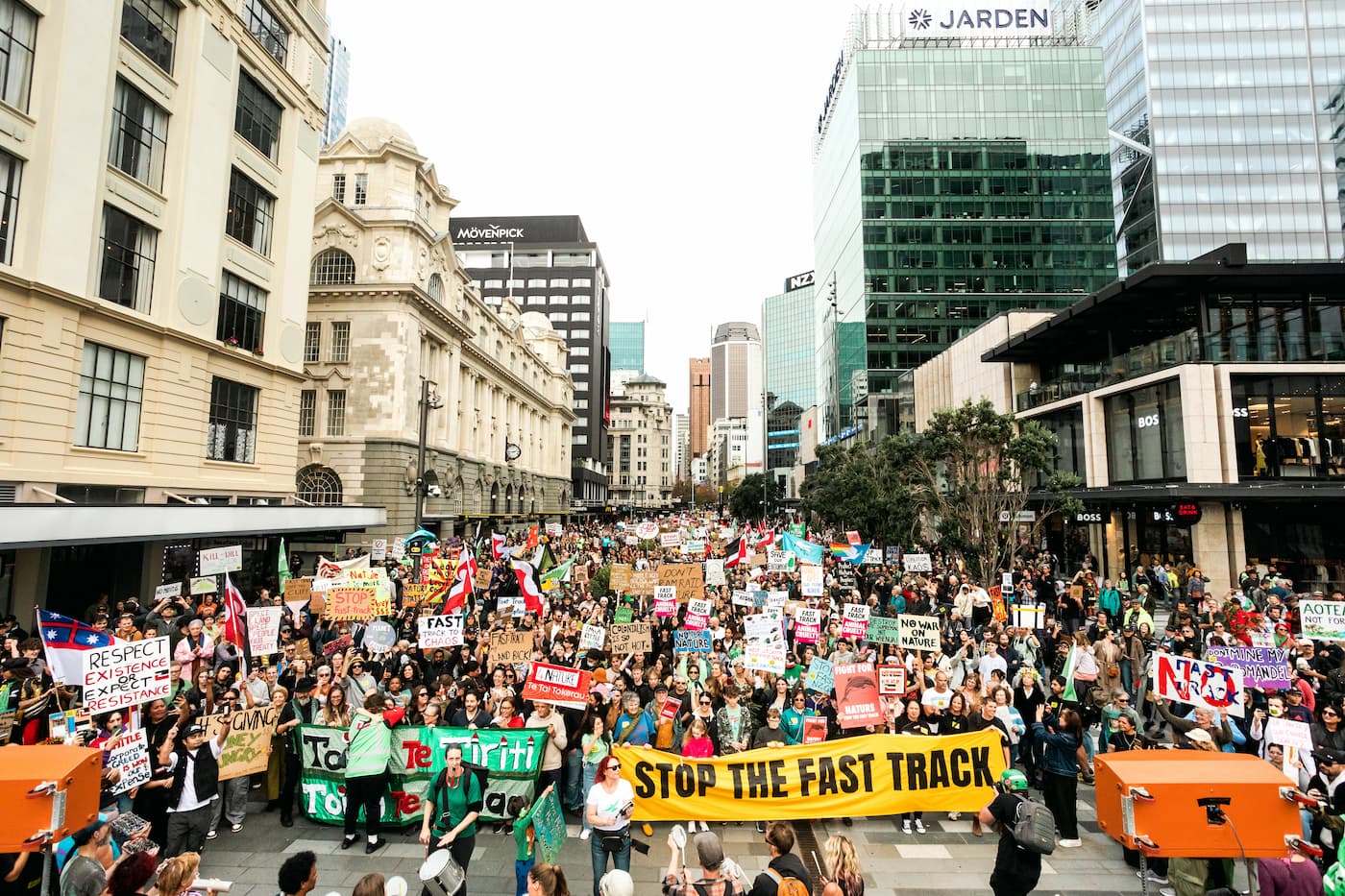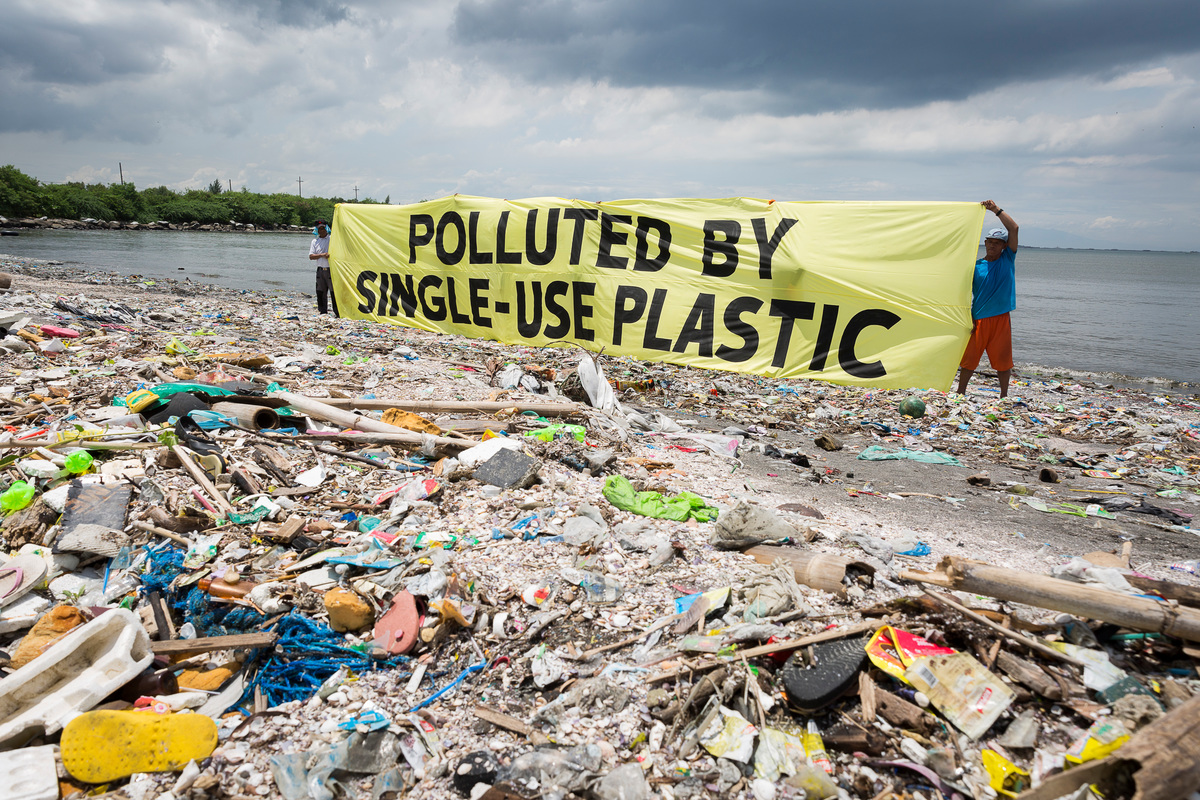If you’ve ever wondered what corporate arrogance looks like, spend a day at Trans-Tasman Resources’ (TTR) fast-track application conference*. I did. It was my first out-of-office in my new role at Greenpeace; a road trip south with our Programme Director to support iwi, Kiwis Against Seabed Mining (KASM), and the others who’ve spent over a decade fighting this.
On the drive down, I wondered what the event would look and feel like. Under the fast-track process, we had no precedent to guide us.
After the first day, the event looked like a lot of things, but mostly it looked like an ironic, united front between iwi, communities, boating clubs, fisheries and oil companies, standing up against a corporation that thinks it must follow no rules.
But as infuriating as it is for us all to be back in this room, by the end of day two, it looked less like a conference and more like a criminal trial — one in which the evidence against the defendant is so overwhelming, you start to wonder why they even showed up.
The answer, of course, is political confidence.
TTR seems to believe that their friendliness with the coalition government will make up for the fact that they’ve been rejected by everyone else — iwi, scientists, councils, community groups, even the Supreme Court. They’ve lost badly, and repeatedly.
But nevertheless, they persist.
Here they are again, trying to repackage the same bad science, the same discredited modelling, the same lack of answers, feeding it up to the expert panel as something new.
It’s insulting. Not just to the iwi who have fought them for more than 15 years, but to the community, the courts, and frankly, to the intelligence of everyone in the room.
Over kai with the iwi after the hearing, I heard first-hand how this process had affected people’s lives — whānau who’ve spent years showing up to hearings, writing submissions, explaining over and over why their moana isn’t up for negotiation. It’s not abstract to them. It’s home, ancestry, and livelihood.
The environmental stakes couldn’t be clearer. The proposed mining zone sits in the heart of a biodiversity hotspot — a feeding ground for pygmy blue whales and Māui dolphins, a place where the seabed supports life that scientists are only starting to understand. Every tonne of sediment TTR proposes to disturb would send plumes across the South Taranaki Bight, suffocating marine habitats and disrupting ecosystems that have sustained life for millennia.
The arrogance is palpable
During breaks, the TTR team huddled together, chuckling as though they hadn’t just been publicly dressed down. One of their staff fetched takeaway coffees for the group; executive chair Alan Eggers didn’t even glance up to thank him. That pretty much sums up the energy of the TTR operation: entitlement in navy suits.
Speaker after speaker, from iwi representatives to local councils, fisheries, and even oil companies, repeated one phrase: “Lack of consultation.” Every. Single. One.
Knowing their modus operandi, it’s perhaps less of a surprise that TTR didn’t bother to meaningfully consult with iwi or the local community, but what was perhaps more revealing was their disregard for other commercial interests. It’s as if they were thinking, “Fisheries won’t be able to fish? Oh dear, well we’re very sorry to hear that, but…”
Ngāti Ruanui made it clear, early and often, that the answer has been no for more than a decade — no to environmental destruction disguised as innovation, no to exploitation without consent, and no to having their whakapapa and tikanga treated as a procedural inconvenience.
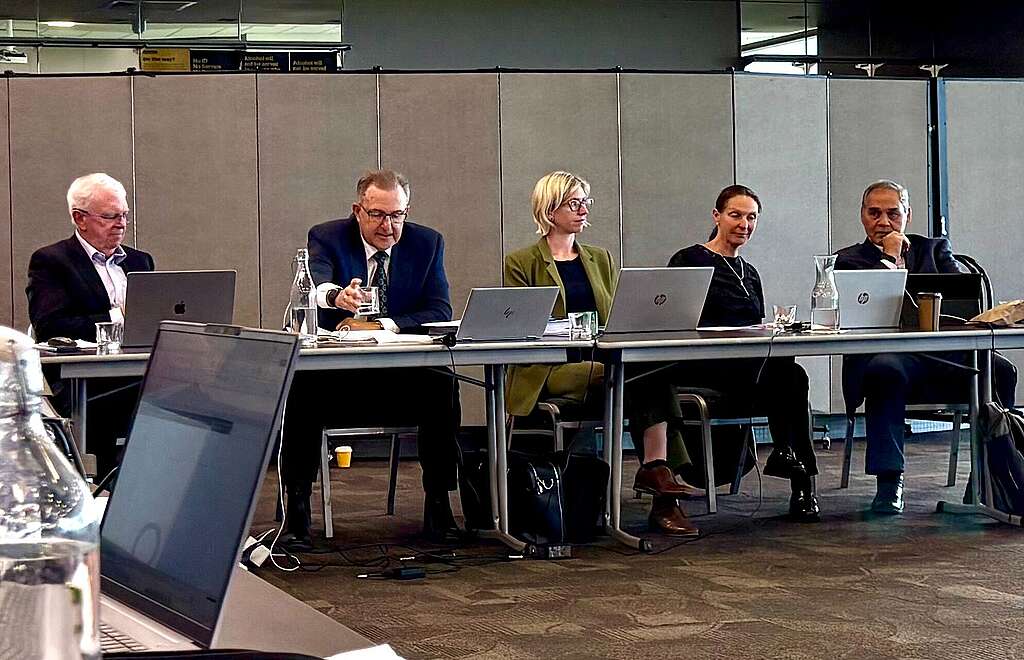
The fast-track irony
But there’s an irony in watching this unfold under the very process designed to make it easier for them. Under the Luxon government’s fast-track process, the expert panel wasn’t remotely required to host this level of consultation. But they chose to anyway – perhaps a heartening sign that they are leading with their consciences. And the irony is, there were more groups represented in this conference than at the previous EPA hearing, and all of them made the same point: TTR has no social licence.
Seafood NZ, while cautious in tone, still criticised the lack of proper assessment – economic, environmental, and otherwise. Their view of the moana as a “resource to manage” rather than a living ecosystem was telling, but even they couldn’t defend the indefensible.
The legal and economic absurdity
One of the few moments of dark comedy came when a lawyer for one of the opposing parties clarified that the panel is not required to rubber-stamp this application just because it’s in the fast-track process. The law still requires the panel to weigh benefits against both costs and wider negative impact. And since “benefit” isn’t even defined in the legislation, they must consider the broader context — economic, cultural, ecological. In other words, there’s no shortcut past common sense.
Meanwhile, the opportunity cost of this project is obvious. The South Taranaki Bight is also one of the best sites in the country for offshore wind energy. Two companies presented clear evidence that if seabed mining goes ahead, offshore wind development won’t. So the choice is plain – the community could have the option to choose clean, renewable energy for the future, if they are spared this destructive, short-term mining experiment that benefits no one but shareholders.
No still means no
Greenpeace’s Programme Director, Niamh O’Flynn summed it up best when she told the panel, “When a community says no, it means no. Enough is enough.” For over a decade, Greenpeace and Kiwis Against Seabed Mining (KASM) have stood alongside iwi in hearings, in courtrooms, and in the streets, saying the same thing. We represent more than 53,000 New Zealanders who’ve signed a petition calling for a ban on seabed mining, and nearly 5 million globally who’ve said no to deep sea mining everywhere. The fight in Aotearoa is part of a growing international movement — one that recognises that what happens in the South Taranaki Bight sets a precedent for the Pacific, and potentially for the entire global ocean floor.
It’s worth remembering that this hearing itself only exists because of people power. When the Fast-Track Bill was first announced, the decision on projects like TTR’s was meant to rest in the hands of just three government ministers — no consultation, no transparency, no voice for the public. But that didn’t fly this time. Public outrage and sustained protest forced the government to backtrack and create these so-called “expert panels.” In other words, the only reason the community is being heard at all is because people refused to accept being shut out.
The community shouldn’t have to keep fighting the same fight because a few friends of Shane Jones refuse to take no for an answer. But here we are, wasting public time and resources on a reheated application with no new science, no new consultation, no new respect.
The ocean life deserves better. The iwi and community deserves better. Future generations deserve better. And the expert panel deserves better than to be treated like a political loophole.
When the Supreme Court says no, when mana whenua say no, when science says no, it’s time for TTR to pack up their coffee cups and finally take the hint.
—
*It’s important to note that, as part of the fast-track process, the panel is not required to hold a formal hearing. They did, however, hold an event that looked, acted and smelled softly like a hearing. The event was labelled a conference.
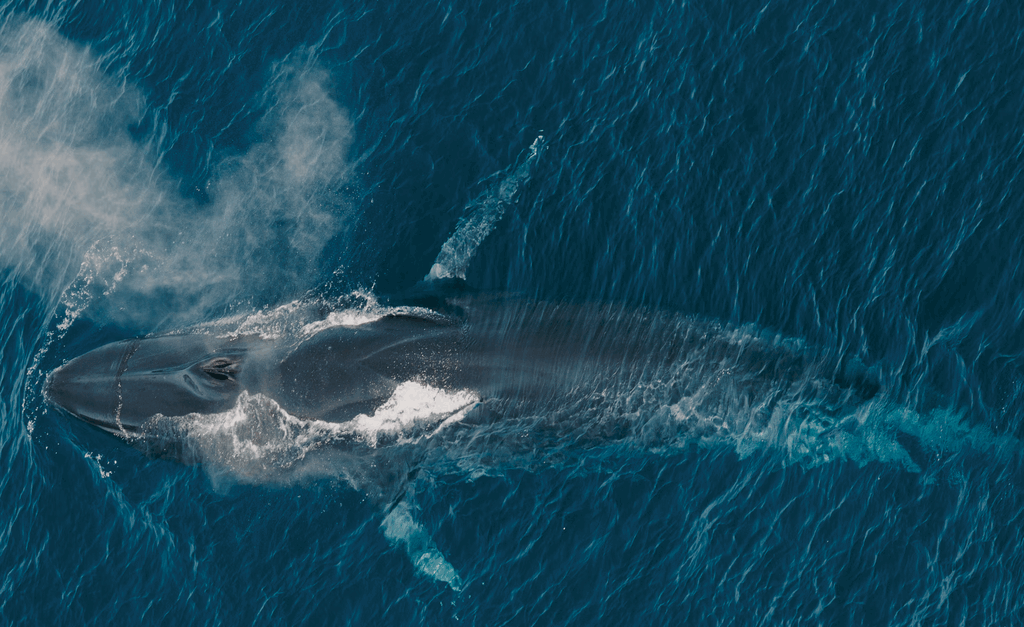
This is a warning to all potential investors in Manuka Resources: Don’t bankroll ocean destruction! Seabed mining will never take place in Aotearoa.
Add my name
